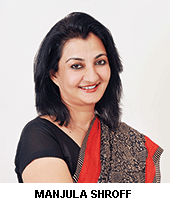Applied knowledge & skills deficit
 The recently announced school-leaving examination board results have generated a huge furore over high scores awarded to thousands of students. The perfect CGPA 10 scores for class X toppers were celebrated countrywide as the outcome of hard work, dedication and intelligence. But all is not well because in applied learning and standardised international and national tests, India’s 90 percentage holders are distant also-rans.
The recently announced school-leaving examination board results have generated a huge furore over high scores awarded to thousands of students. The perfect CGPA 10 scores for class X toppers were celebrated countrywide as the outcome of hard work, dedication and intelligence. But all is not well because in applied learning and standardised international and national tests, India’s 90 percentage holders are distant also-rans.
In the global PISA (Programme for International Student Assessment) — an objective standardised multinational test in math and science conducted by OECD (an association of developed countries) — in 2010, the first batch of 15-year-olds selected from government and private schools in Tamil Nadu and Himachal Pradesh — India’s most educationally advanced states — fared miserably. India ended up at the bottom, ranked #73 among 74 countries.
Likewise, in the recently published NAS (National Achievement Survey) 2015, conducted by the Delhi-based National Council of Educational Research and Training (NCERT) over a period of five months, which tested the unprepared learning outcomes of 277,000 class X students of 7,216 schools across India in English, maths, science, social science and major Indian (i.e state) language, the performance was also dismal. The average percentage scores recorded by students from schools affiliated with the CISCE, CBSE and 31 state examination boards across the country were 41 in English, 40 (maths), 43 (science), 47 (social science) and 53 (major Indian language). Assuming that 50 percent is the pass threshold, this representative sample of India’s class X students failed in all subjects except major Indian language in NAS 2015.
Such evidence prompts me to wonder whether the teachers’ community is developing students adequately. Do we need to produce students capable of memorising facts and scoring high marks in competitive exams, or children who love learning and exploring their limits and capabilities to become productive adults in the real world beyond the gates of schools and universities?
This question seems simple but has the potential of changing how education is delivered in the Indian context. Regrettably, theres an obsession with exam results at the expense of everything else. When children are forced to memorise and learn by rote as is the current fashion, the spark of creativity and discovery within them is extinguished. This type of learning results in the development of a workforce lacking critical thinking skills, cognitive flexibility and the courage to experiment and take risks. Memorisation or learning verbatim is the prime cause of the poor performance of our students in applied knowledge tests such as PISA and NAS 2015.
Although there’s growing awareness of the downsides of rote learning, this awareness is restricted to progressive urban and international schools affiliated with offshore examination boards. But new and progressive international schools implementing applied and self-learning pedagogies are a tiny minority of the 1.4 million national and state boards-affiliated schools, still heavily reliant on memory-based pedagogies. Moreover, instead of being admired and emulated, progressive and international schools in the private education space are routinely criticised for “commercialisation of education”.
Quite clearly, the Indian education system seems to have lost its core, with marketing trumping pedagogy and exam results overshadowing real knowledge acquisition. One often sees billboards trumpeting the scores of students in competitive exams, but you will never see an advertisement boasting about the research or vocational education skills of a school.
Currently the annual revenue of the Indian education market is estimated at $100 billion (Rs.667,200 crore) growing at an average rate of 16.5 percent per year. This huge market has attracted investors for whom return on capital is the prime consideration. But for the Indian economy to sustain its aggressive growth, it will have to emulate progressive countries whose education systems produce students capable of applying textbook knowledge and competing in global standardised tests. This requires an academic and societal mindset which rejects obsessive focus on board exam scores. Syllabuses desperately need to be upgraded and contemporised to stimulate higher order creative thinking and problem-solving skills in schools, colleges and universities.
Apart from stimulating creativity and innovation, the education system has to be skills based. Policy formulators and educators need to pay greater attention to vocational and soft skills training — areas of darkness in Indian education.
Currently, India enjoys the rare advantage of being an ancient civilization with the youngest demography. This imposes an additional responsibility on educationists and teachers to ensure the country’s youth receive carefully balanced academic and skills education to become productive individuals in the rapidly crystallizing global economy.
(Manjula Shroff is chairperson of the Ahmedabad-based KALOREX Group of institutions)















Add comment